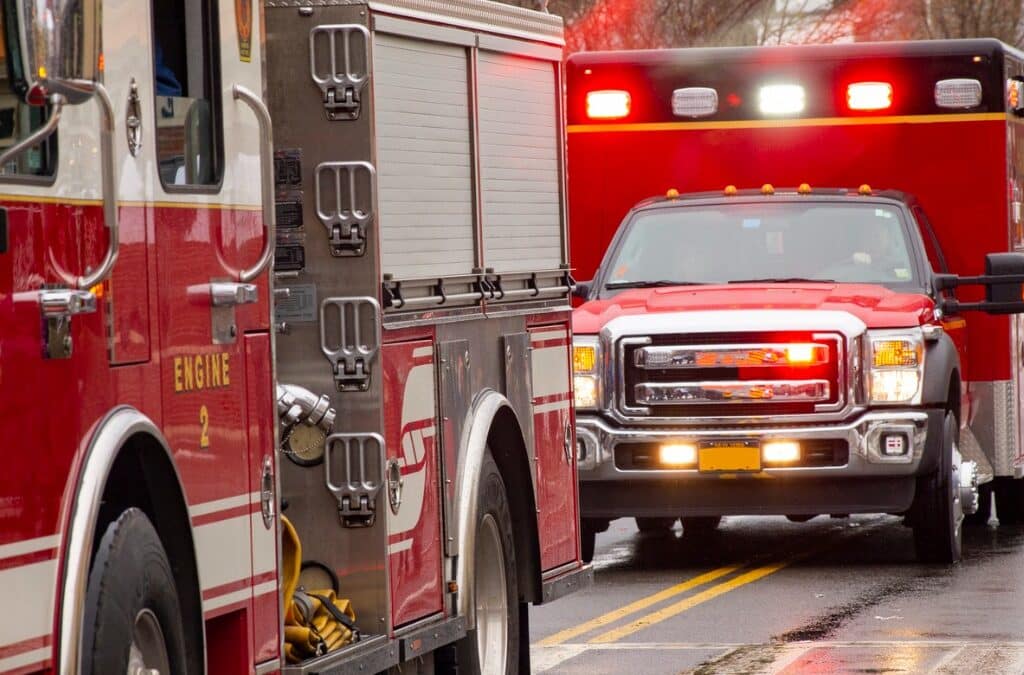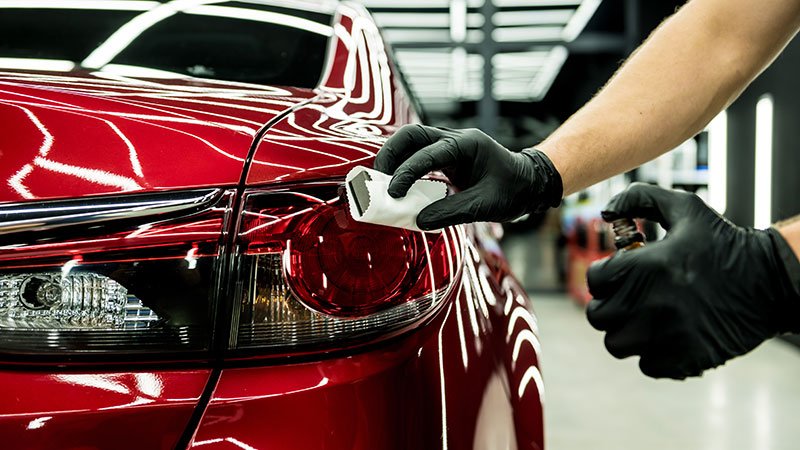The Role of Reflective Materials in Emergency Vehicle Graphics

Have you ever wondered how emergency vehicles stand out so prominently, especially in low-light conditions? This is an all-important quality of these vehicles, and it’s one bystanders often overlook. However, by the end of this article, we think you’ll see reflective materials on emergency vehicle graphics in a whole new light.
Reflective Materials: A Cornerstone of Emergency Vehicle Graphics
When you think of emergency vehicles, striking graphics, and vibrant lighting are often the images that come to mind. Reflective materials play a crucial role in ensuring the visibility of these vehicles, allowing them to be seen clearly, day or night.
Prioritizing Safety: The Core Objective
The primary purpose of reflective materials on emergency vehicles is to enhance safety. People need to be able to spot emergency vehicles from a distance and take necessary precautions to clear the way. Reflective materials, also known as retroreflective materials, ensure the reflection of light back in the direction it came from. This means when a light source (such as headlights or streetlights) hits these materials, it bounces back and directs attention towards the vehicle.
Decoding Reflective Material Science
To truly appreciate the effectiveness of reflective materials, let’s start talking about the importance of choosing the suitable materials for the job.
Diverse Range of Reflective Materials
Reflective materials come in various types, but two are most common in emergency vehicles—prismatic and glass bead-based reflective films—each with unique advantages.
Prismatic Reflective Films
Prismatic reflective films are engineered with a microprismatic design. These films consist of tiny, pyramid-shaped prisms arranged in a precise pattern.
This arrangement allows for superior reflective properties compared to other materials.
Here are some other benefits:
- Increased Brightness: Prismatic films are exceptionally bright. They reflect light more efficiently due to their microprismatic design, making them ideal for ensuring emergency vehicles are visible even from a distance.
- Angular Performance: One of the standout features of prismatic films is their exceptional angular performance. This means they reflect light over a wide range of angles, ensuring the graphics remain highly visible even when viewed from off-center angles—you can imagine why this is a crucial feature for vehicles on the road.
- Durability: Prismatic films are known for their durability. Built to withstand harsh weather, they are a reliable choice for emergency vehicle graphics that need to endure a wide range of weather conditions.
Glass Bead-Based Reflective Films
Glass bead-based reflective films are another essential category of reflective materials. These films are composed of tiny glass beads embedded in a reflective layer.
They’ve been a staple in reflective applications for decades.
- Versatility: Glass bead-based films are versatile and can be used on a wide range of surfaces, including metal, plastic, and glass. This versatility makes them suitable for various applications on emergency vehicles.
- Cost-Effective: Glass bead-based films often offer a more cost-effective option compared to prismatic films, making them a practical choice for budget-conscious applications.
- High Retroreflectivity: Glass bead-based films excel in retroreflection, efficiently bouncing light directly back toward its source. This property ensures emergency vehicle graphics remain highly visible, even when visual conditions aren’t optimal.
- Longevity: When properly maintained, glass bead-based reflective films can have a long service life (often between six and seven years). They are designed to withstand the rigors of daily use and environmental exposure.
However, designers often combine both prismatic and glass bead-based reflective films in emergency vehicle graphics to achieve the best balance between brightness and cost-effectiveness. This hybrid approach combines the strengths of both film types for incredible results.
Withstanding the Elements: Durability Considerations
Emergency vehicles are exposed to diverse environmental conditions daily. Reflective materials must be engineered to withstand extreme weather, UV rays, and regular wear and tear. These materials must maintain their reflective properties even under the harshest environmental conditions for adequate safety.
Navigating the Legal Landscape
Compliance with emergency graphics regulations and standards is vital for emergency vehicles. Each state has different requirements for the color, placement, and size of reflective markings on emergency vehicles.
In addition to state regulations, national standards are set by organizations like the National Fire Protection Association (NFPA) as well as the Federal Highway Administration (FHWA). Not adhering to these regulations can result in fines or even legal consequences.
Innovation in Reflective Technology
Reflective technology is changing all the time, but it’s also not something most people hear a lot about.
So, next, let’s explore the latest advancements in reflective materials and how they are pushing the boundaries of safety and visibility for emergency vehicles and other industries.
Microprismatic Reflective Films
One of the most noteworthy developments in reflective technology is the emergence of microprismatic reflective films. These films use micro-optics to create an incredibly efficient reflective surface. What sets them apart is their ability to reflect light over a wider range of angles, making them exceptionally visible from various perspectives.
Customization through Digital Printing
Digital printing technology has revolutionized the way reflective graphics are designed and applied. Emergency vehicles can now feature highly detailed and intricate designs once impossible to achieve.
Highly Reflective Fabrics in Apparel
Reflective materials have expanded beyond vehicles and signs into the realm of clothing. Highly reflective fabrics are now found in sportswear, outerwear, and everyday clothing. This innovation seriously improves visibility for pedestrians and cyclists, keeping them safer in low-light conditions.
Reflective Coatings for Infrastructure
Reflective coatings are on various infrastructure elements, such as bridges, guardrails, and signs. These coatings improve visibility for drivers, especially in adverse weather conditions. They contribute to reducing accidents and help with safe navigation on roadways as well.
Sustainable Reflective Materials
Reflective technology is also becoming more eco-friendly. Innovations in sustainable materials and manufacturing processes are reducing the environmental footprint of reflective materials. This shift toward sustainability aligns with global efforts to promote environmentally responsible practices.
While not directly related to emergency vehicles, on the topic of reflective materials, it’s interesting to note how they are being used on pavement. “Reflective” pavements stay cooler and help keep the surrounding air cooler. This is just one exciting way reflective materials are changing the world!c
Conclusion: The Role of Reflective Materials in Emergency Vehicles
Reflective materials are the unsung heroes guiding emergency responders through the darkest hours while enhancing road safety. From understanding the science behind them to appreciating their contributions to aesthetics and safety, we hope this comprehensive guide has illuminated their multifaceted role.
To talk more about your options for emergency vehicle graphics, contact Graphic Designs International today. Their expert designers will bring your vision to life.






